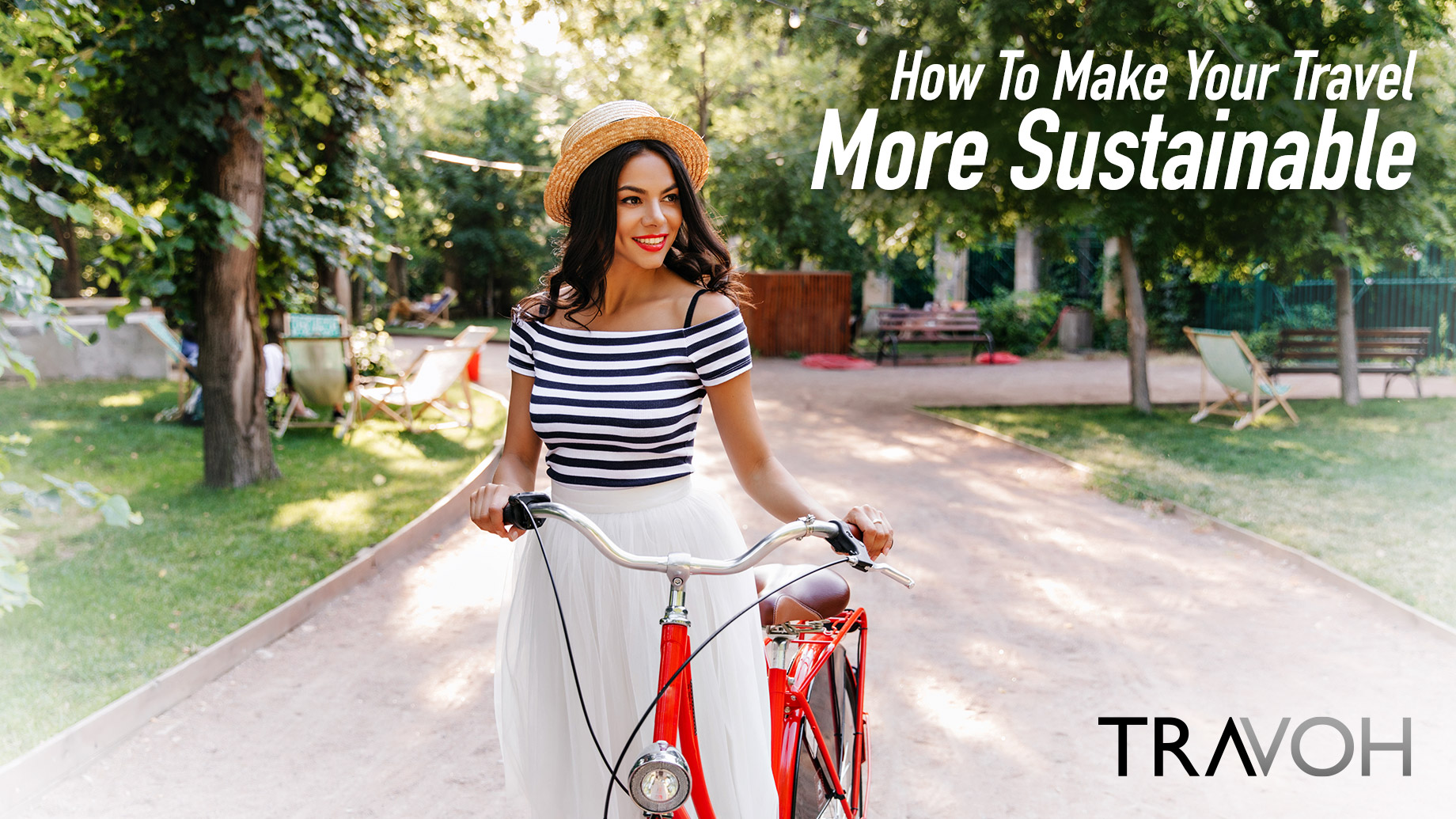
From learning how to pack your things efficiently to understanding how car rentals work, there’s so much more to traveling than simply taking off to a new city or country.
With travel becoming more and more accessible to the everyday person, we’re seeing travelers multiply by the day. And while traveling itself can be transformative, we cannot turn a blind eye to its effects on our environment. It consumes many resources, generates tons of waste, and hurts low-income places.
Fortunately, being environmentally aware doesn’t require giving up adventures to the faraway locations on your bucket list. Instead, by planning ahead, selecting environmentally-friendly options, and altering the pace of your travel, you can practice sustainable travel, too.
Here are five suggestions for sustainable travel that won’t take away from your experience:
Minimize Single-Use Products
While it’s great to avoid uneven skin tone with a sachet of sunscreen, the environment wouldn’t appreciate added waste. So as much as possible, reduce your use of single-use products.
Opt for steel straws, reusable water bottles, coffee cups, and even makeup rounds. For people who menstruate, period underwear while traveling will be your best friend. Maybe it’s also time to try those menstrual cups or discs you’ve heard about.
As for what you’ll eat, head to the market or grocery store for fruits and nuts instead of surviving on little packages of crisps.
Use More Efficient Transportation Methods
The most significant contributors to tourism’s carbon footprint are air travel, driving, and other modes of transportation. Of course, we all know that all forms of transportation use energy. However, some are cleaner and more effective than others. That’s why how you get to, from, and around your destination makes a huge difference.
Generally speaking, cars and airplanes are the least effective forms of transportation. So when you’re vacationing in closer destinations, traveling by rail or coach will help reduce your emissions. Instead of hiring a car after you get to your location, think about taking the bus, riding the train, or cycling around town. If you must rent a car, choose an electric, hybrid, or smaller model.
Of course, your transportation options will vary from one destination to the next, so make sure to research different alternatives in the destination you’re visiting to make an informed decision.
Travel Slowly and Intentionally
Many people wish to travel, but money and free time are limited. So one strategy for packing in as much action as possible is to take multi-stop trips. After all, why stay in one place when you can board a train or plane and go to a different location every day?
Unfortunately, doing this uses a lot of resources. So the next time you travel, do yourself and the environment a favor by giving yourself more time to explore your destination. Choose one longer vacation each year rather than several shorter ones.
You can truly enjoy the location you are visiting if you take things slowly. Being unhurried allows you to spend more time getting to know the locals, immersing yourself in the culture, and discovering the destination’s unique attractions.
Aside from creating more authentic and lasting experiences by traveling slower, you’ll also ease the burden on the towns and cities you visit. Additionally, this practice is better for the environment as it reduces the carbon emissions produced by flying or driving long distances.
Do Your Homework and Respect The Area’s Culture
Before traveling, familiarize yourself with the destination’s history, customs, and etiquette before immersing yourself in other cultures. Get a language app, and learn a few words and phrases in the native tongue.
Be mindful that certain gestures, attire, or remarks are disrespectful in some places. When visiting sites of worship or other spiritual destinations, take extra care. Visit only locations that welcome visitors and follow all rules and regulations. This may entail removing your shoes, covering your shoulders, lowering your voice, or not taking photos of specific areas.
Always remember that wherever you go, you’re visiting someone else’s home. Therefore, try your best to leave the destinations you’re going to in the same condition that you found them so that future generations of residents and travelers can enjoy them as well.
Support The Local Economy
The global pandemic took a toll on many communities due to the lack of tourism. Help them bounce back by ensuring your money stays in the local economy.
The best way to do this is to support local businesses and independent entrepreneurs. Instead of staying in hotels run by big companies or large multinational chains, opt for locally operated homestays and guesthouses.
You can also dine at neighborhood restaurants and enjoy traditional dishes with locally-sourced ingredients. Get out of your comfort zone and have fun exploring the local market!
Book tours conducted by local guides, or enroll in cooking, weaving, or surfing classes to pick up a new talent from a local pro. When selecting a tour operator for a package, look for one that gives local vendors top priority.
Lastly, when buying gifts to bring back to your family and friends, shop at local stores to support artists who use environmentally-friendly materials to create unique gifts tied to their culture.
Become A Better Traveler—Travel Sustainably!
As we become regular backpackers, travelers, tourists, and wanderers again, we must find a balance between lowering our carbon impact and helping places that depend on tourism. So when you’re choosing your travel destination, take into account who will gain from your spending.
We can all contribute to preserving our beautiful world by committing to travel more thoughtfully and going to locations where delicate ecosystems are protected, and local populations are supported.
For more insightful articles on travel and tourism, make sure to read more TRAVOH articles.
